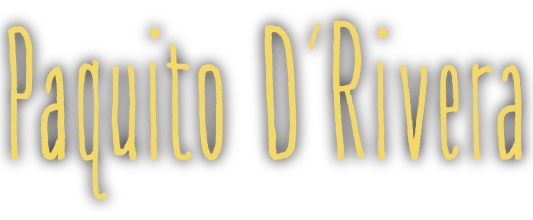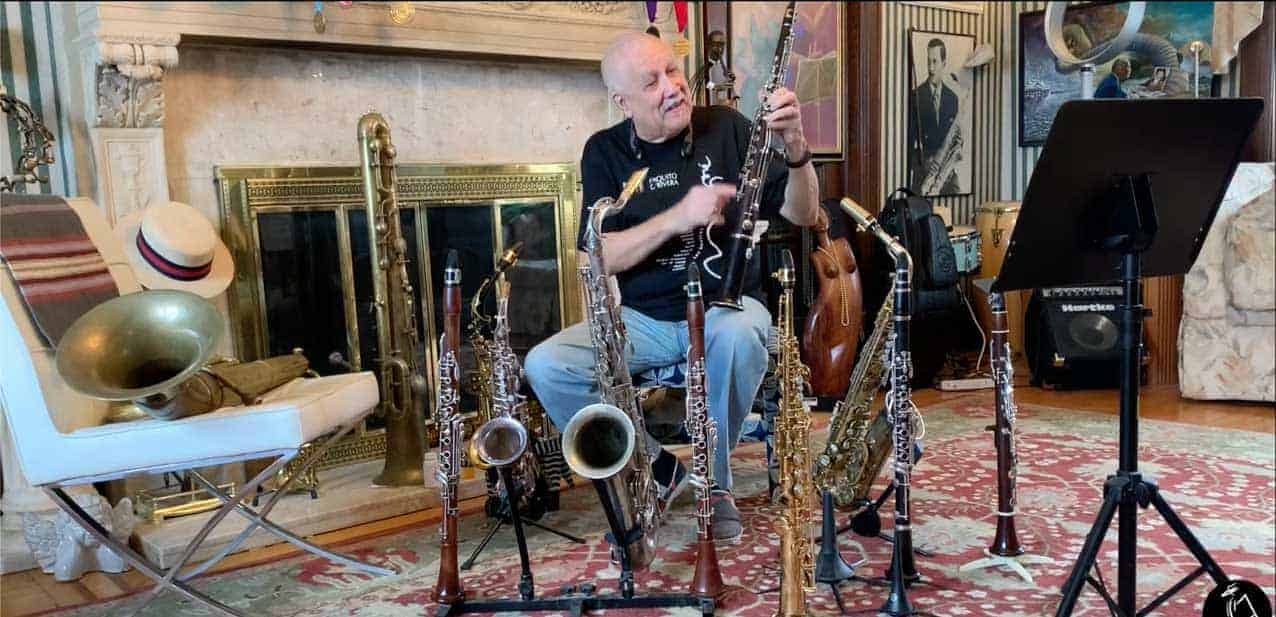Let’s Talk About the Saxophone
Now the saxophone. The alto saxophone wonderful instrument in those days it was not supposed to uh I don’t “Steve Lacey” (extraordinary doubler), so you’re not supposed to play only the soprano you know… you have to know how to play something else. So, my father gave me an alto saxophone a Selmer Mark VI, and still, I have that instrument. It is a pretty good instrument. But I was frustrated with the range because I was used to the soprano and the clarinet, and my ear was in B-flat. It was complicated for me. So, he came home with a book of Jimmy Dorsey, a book for high notes, and I was less frustrated.
(Music)
Saxophone Brands
So, this is a Yamaha custom saxophone; it’s a fantastic instrument. Yamaha is making such wonderful saxophones. But I will tell you something else this is a King Super 20, (alto sax) a legendary instrument. Why? Always, I wanted to have one of these because it’s a kind of nostalgic. This instrument was played by wonderful alto players like Cannonball Adderley, and Charlie Parker recorded his LP Bird with Strings (album) with an instrument like this a King Super 20. Always I wanted to have one. He had a very particular sound very like I call it a very happy sound.
(Music)
Size of the Saxophone Mouthpiece Affects the Volume
Beautiful sound. But I tell you something; you have to be very careful about the volume. The volume is very important. If you are going to be playing with a Jazz quartet or in a Jazz setting, this mouthpiece is perfect. This kind mouthpiece is a Jazz mouthpiece; this is a Claude Lakey No. 5, alto saxophone mouthpiece. Very good this volume and all that… very versatile piece.
But if you are going to playing with woodwinds, strings, things like that, you can’t play with that type of volume. You need a mouthpiece that sounds more adaptable; that way, you can blend. I mean, a smaller mouthpiece doesn’t matter the brand, can be a Selmer or a Vandoren. Vandoren has a great range of different mouthpieces. But you can not blend with strings or woodwinds with a mouthpiece this big (Claude Lakey No. 5). You need something more flexible is the word.
But I tell you something; you have to be very careful about the volume. …if you are going to playing with woodwinds, strings…you need a mouthpiece that sounds more adaptable; that way, you can blend…a smaller mouthpiece…”
(Click to Tweet)
(Music)
See what I mean? You could blend with a French Horn, for example, or a Cello, but not with a big mouthpiece.
Romanian Soprano Saxophone
The Tarogato, what a name. A Hungarian Romanian wooden soprano saxophone – this sound is very mysterious, you know, it’s a little similar to the soprano but is darker. Joe Lovano loved this instrument, as well as Scott Robinson. He told me you should you should get yourself a Tarogato because it’s a wonderful instrument.
I went to Budapest, I went to Budapest which is a wonderfully romantic city, and then I ordered this, I went to pick up this instrument that I ordered. This is a unique Tarogato; it’s not very common because it has an articulated G-sharp and is it is a what they call a bone system Tarogato. Usually, Tarogotos are kind of an Albert system instrument.
So, I brought this instrument recorded once with Armando Manzanero, one of those wonderful Boleros on the CD called Paquito Plays Manzanero.
You see that the soprano sound is similar to soprano but a lot darker.
(Music)
You don’t really have the high notes keys over soprano saxophone, so, you have, I don’t know really, I have to take some lessons with Scott Robinson. You don’t have the high notes keys, so the extension is more limited. The intonation you have to be very careful because it’s not as accurate as Yamaha soprano.
(Music)
The high notes you don’t have the commodities of the soprano or the volume.
(Music)
Here the sound is a little darker; you don’t have all those facilities to run.
(Music)
Nothing, you have to practice it’s not sure because of that – practicing that’s all.
Be sure to subscribe on YouTube to catch the next Masterclass video!



